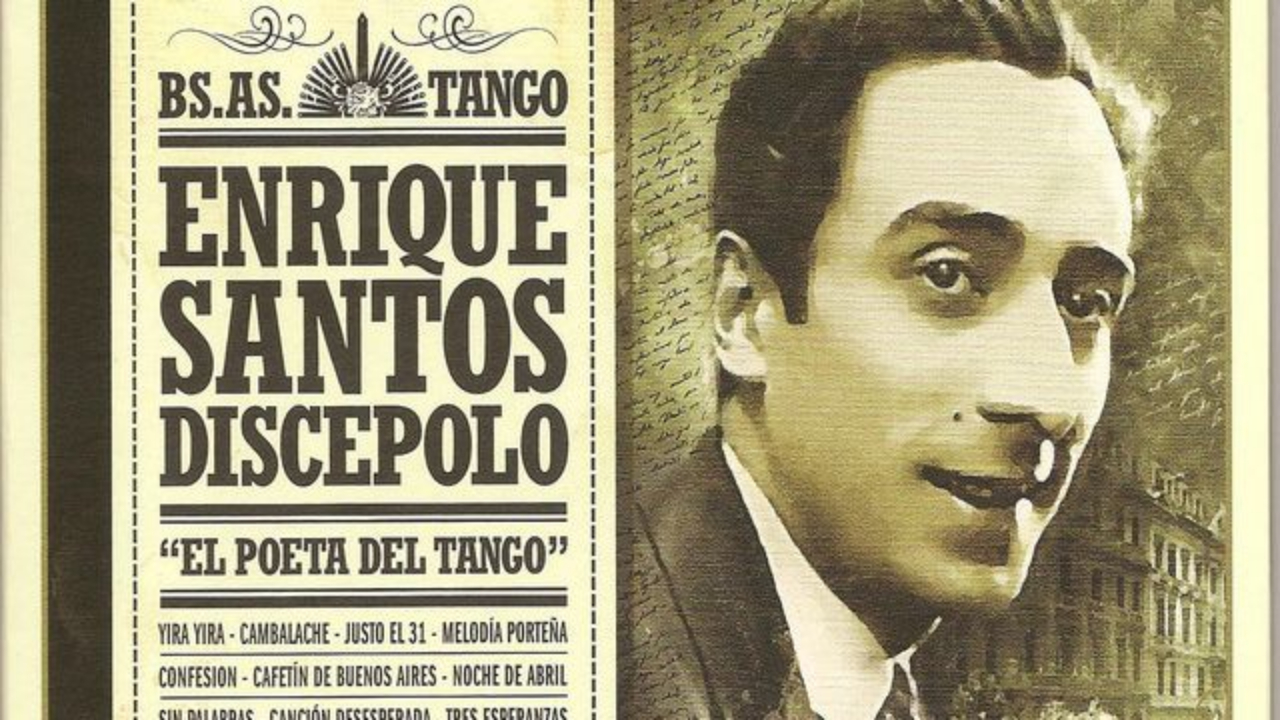Lunfardo and the forbidden lyrics in Tango
Feb 05, 2023
© by Mariano Diaz Campos
In my previous blog I spoke about Lunfardo, the secret language of the city Buenos Aires. In this blog I you can read about the forbidden lyrics in tango.
The word 'tango' comes from West-African word for the god of thunder and later became a word for 'gathering' of slaves when they had a Sunday leave and came together to make music and dance in the southern parts of Buenos Aires. The neighbourhoods Montserrat, San Telmo and Boca where also the neighbourhoods where the best festivities took place during Carnaval. And during Carnaval everything seemed allowed. Specially tango involved. Montevideo had the same outgoing culture.
So many youngsters, students and dandy's, paraded during this time and they went from bar to bar and they sang songs (like Argentine football fans) with dirty lyrics hoping to get free drinks. These parades where called Cumparsas, and thus the famous tango La Cumparsita was invented by Urugauayan student Gerard Mattos Rodrigues. The myth is that the obscene lyric was changed, to the dismay of Rodriguez, by poets Pascal Contursi and Enrique Pedro Maroni. The tango also El Choclo had an obscene lyric and the vegetable had a double meaning.
The rich oligarquía of Argentina was of course not amused by the cultural phenomenon of tango. Their world was very British influenced. Playing tennis and polo, listening to classical music, drinking tea in the afternoon, travelling from their vast estancia's, their chalets in Buenos Aires and Paris, and never mingling in the world of their employees.
After the fascist coup of General José Félix Uriburu in 1930 the conservative oligarquía took again their control after the moderate liberal period of a democratic government. Corruption and election fraud afflicted the whole period of the thirties. In Argentine history this period is called la Década Infame, the infamous decade. Thus famous poet Enrique Santos Discépolo wrote the famous tango Cambalache in 1934 talking about the corruption, the thieves and the chaos of the thirties. The tango was written for the movie El Alma de Bandoneon which came out in 1935.
After another coup in 1943 the song was banned because of the lyrics. The new government imposed a ban on tango lyrics with lunfardo words. When president Juan Domingo Perón came to power in 1946 the ban stayed on, although he was married to Eva Evita Duarte de Perón, who was an actress and a good friend of Enrique Santos Discépolo.
Musicians and poets like Francisco Canaro, Anibal Troilo, Homero Manzi, José Razzano, Charlo, Enrique Cadícamo, Alberto Vaccarezza and Lito Bayardo as representatives royalty music union SADAIC asked for an appointment with Peron on 25th of March 1949. The myth say that when Perón hugged Vaccarezza he said 'Cómo está Don Alberto, es cierto que lo afanaron en el bondi?' . Afanar and bondi respectively mean 'steal' and 'bus' in lunfardo. Perón was not aware of restrictions of the language and lifted the ban on lunfardo lyrics the next day.
The stories behind Enrique Santos Discépolo tango's Cambalache and others like Yira, yira and Chorra are legendary. Because of Discépolo's social and political views his tango's were banned often. The last time Cambalache was banned was after the coup of 1976 where the military junta 'advised' radio and television 'not to broadcast' the tango, leaving out what the consequence were if they did.
Cambalache
Tango, 1934
Letras: Enrique Santos Discépolo
Written for the movie "El Alma del Bandoneon" with singer Ernesto Famá
Lyrics with translation below
Cambalache interpreted by singer Ernesto Famá.
Que el mundo fue y será una porquería, ya lo sé…
(¡En el quinientos seis y en el dos mil también!).
Que siempre ha habido chorros, maquiavelos y estafaos,
contentos y amargaos, valores y dublé...
Pero que el siglo veinte es un despliegue
de maldá insolente, ya no hay quien lo niegue.
Vivimos revolcaos en un merengue
y en un mismo lodo todos manoseaos...
That the world was and always be a pig stall, I already know…
(In the year five hundred and six and in the year two thousand too!)
There always have been thieves, traitors and victims of fraud,
happy and bitter people, valuables and imitations
But, that the twentieth century is a display
of insolent malice, nobody can deny it anymore.
We lived sunk in a fuzz
and in the same mud all well-worn…
¡Hoy resulta que es lo mismo
ser derecho que traidor!...
¡Ignorante, sabio o chorro,
generoso o estafador!
¡Todo es igual!
¡Nada es mejor!
¡Lo mismo un burro
que un gran profesor!
No hay aplazaos
ni escalafón,
los inmorales
nos han igualao.
Si uno vive en la impostura
y otro roba en su ambición,
¡da lo mismo que sea cura,
colchonero, rey de bastos,
caradura o polizón!...
Today it happens it is the same
to be decent or a traitor!
To be an ignorant, a genius, a pickpocket,
a generous person or a swindler!
All is the same! Nothing is better!
They are the same, an idiot ass
and a great professor!
There are no failing grades or merit valuations,
the immoral have caught up with us.
If one lives in a pose
and another, in his ambition, steals,
it’s the same if it’s a priest,
a mattress maker, a king of clubs,
a cad or a tramp.
¡Qué falta de respeto,
qué atropello a la razón!
¡Cualquiera es un señor!
¡Cualquiera es un ladrón!
Mezclao con Stavisky va
Don Bosco y "La Mignón",
Don Chicho y Napoleón,
Carnera y San Martín…
Igual que en la vidriera irrespetuosa
de los cambalaches
se ha mezclao la vida,
y herida por un sable sin remaches
ves llorar la Biblia
contra un calefón…
What a lack of respect,
what a way to run over reason!
Anybody is a gentleman!
Anybody is a thief!
Mixed with Stavisky, you have Don Bosco
and La Mignon
don Chicho and Napoleon,
Carnera and San Martin.
Like in the disrespectful window
of the bazaars,
life is mixed up,
and wounded by a sword without rivets
you can see a Bible crying
next to a water heater.
¡Siglo veinte, cambalache
problemático y febril!...
El que no llora no mama
y el que no afana es un gil!
¡Dale nomás!
¡Dale que va!
¡Que allá en el horno
nos vamo a encontrar!
¡No pienses más,
sentate a un lao,
que a nadie importa
si naciste honrao!
Es lo mismo el que labura
noche y día como un buey,
que el que vive de los otros,
que el que mata, que el que cura
o está fuera de la ley…
Twentieth century, chaotic, problematic and feverish!
If you don’t cry, you don’t get fed
and if you don’t steal, you’re a stupid.
Go ahead! Keep it up!
That there, in hell we’re gonna reunite.
Don’t think anymore, move out of the way.
Nobody seems to care, if you were born honest.
That is the same the one who works, day and night like an ox,
than the one who lives from the others,
than the one that kills or heals or the one who lives outside the law.
Cambalache interpreted by Francisco Canaro and singer Tita Merello.
Cambalache interpreted by Francisco Canaro and singer Roberto Maida.
Cambalache interpreted by Miguel Caló and singer Roberto Arrieta.
Notes about names mentioned in the lyrcis
Alexandre Stavisky (1888-1934) was a French-Ukrainian financier and fraud, whose “hockshop” was a front for selling phony bonds. When government ministers were implicated in his crimes, he fled to a chalet and was found “suicided” by the police, provoking riots in Paris that brought down the government.
Saint Giovanni Bosco (1815-1888) was an Italian priest and educator who founded the Salesian Preventive Method of teaching; he was canonized in 1934.
Mignón was a character in opera and popular culture (derived from Goethe’s novel Wilhelm Meister’s Apprenticeship); the name and image became a byword for chic fashion as well as illicit affairs. Mignón was also a brand of German typewriter, discontinued in 1934.
Don Chicho (1892-1943), born Giovanni Galiffi, was a Sicilian mobster who styled himself “the Al Capone of Rosario,” and was deported from Argentina to Italy in 1934.
Napoleon Bonaparte (1769-1821) appears in the title of the very popular author Emma Orczy’s 1934 novel A Spy of Napoleon.
Primo Carnera (1906-1967) was an Italian heavyweight boxer, who was world champion in 1933-1934; he still holds the record for most wins by knockout (with 72).
José de San Martín (1778-1850) was an Argentine general, the national hero and liberador of South America.
About the author of this blog, Mariano Diaz Campos
"I was born in Buenos Aires, Argentina. Through my family I have been intimately involved with the culture of Tango all my life. I have been an Argentine Tango dance performer, choreographer and instructor for over 30 years.
My grandfather had a milonga in Tapalqué and my great aunt had a milonga in Buenos Aires during the Golden Era and after.
Both my parents are professional tangodancers. They were solo dancers of the orchestra of Osvaldo Pugliese and they worked intensively with Antonio Todaro and Suzuki y Pepito Avellaneda. Todaro gave me my first tango shoes.
I profoundly love Tango dancing, music, history and culture. I am a tanguero and a milonguero.
My interests beside tango are history, journalism (graduated journalism in 2001) and mindfulness (certified Mindfulness Based Trainer since 2021)."


